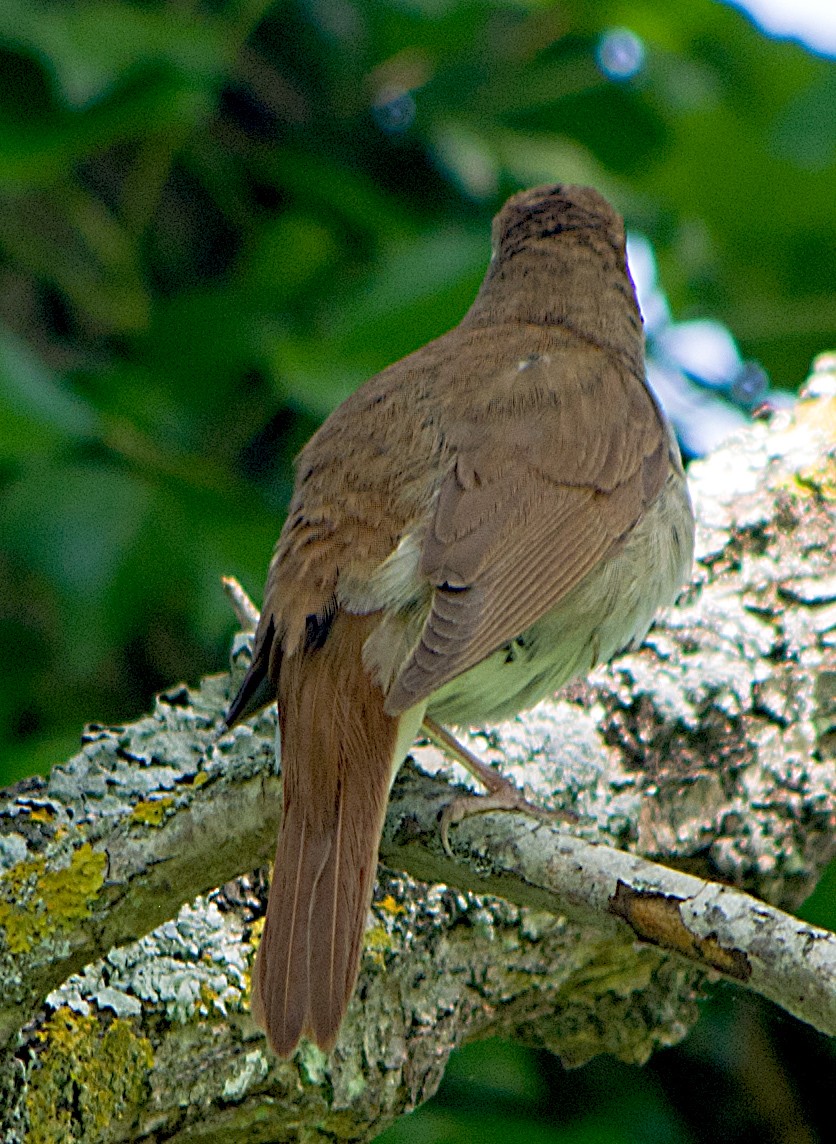Common Nightingale
A species of Nightingales and Allies Scientific name : Luscinia megarhynchos Genus : Nightingales and Allies
Common Nightingale, A species of Nightingales and Allies
Botanical name: Luscinia megarhynchos
Genus: Nightingales and Allies
Content
Description General Info
 Photo By Katya , used under CC-BY-SA-2.0 /Cropped and compressed from original
Photo By Katya , used under CC-BY-SA-2.0 /Cropped and compressed from original Description
The common nightingale is slightly larger than the European robin, at 15–16.5 cm (5.9–6.5 in) length. It is plain brown above except for the reddish tail. It is buff to white below. The sexes are similar. The eastern subspecies (L. m. golzi) and the Caucasian subspecies (L. m. africana) have paler upperparts and a stronger face-pattern, including a pale supercilium. The song of the nightingale has been described as one of the most beautiful sounds in nature, inspiring songs, fairy tales, opera, books, and a great deal of poetry. 
Size
17 cm
Nest Placement
Shrub
Feeding Habits
Common Nightingale primarily consumes invertebrates, including beetles, ants, and caterpillars, complemented by berries and seeds seasonally. It forages in dense cover and ground leaf litter, utilizing aerial pursuits and perching techniques. Nestlings are fed a diverse diet from insects to small arthropods.
Habitat
Common Nightingale favors open lowland woodlands, thick undergrowth, and edge habitats in northern and western Europe, with varied elevation preferences from below 500 m to 1400 m in southern areas. Characterized by warm growing seasons and moderate precipitation, its habitats range from coppices near water to suburban gardens. During winters, common Nightingale migrates to Sub-Saharan Africa, where it occupies forest fringes and scrubby savannas, maintaining a territorial presence through distinctive song.
Dite type
Insectivorous
General Info
Feeding Habits
Bird food type
Sounds
Call
Recording location: Belgium
Song
Recording location: Belgium
Call
Recording location: Ethiopia
Song
Recording location: Netherlands
Behavior
Common nightingales are so named because they frequently sing at night as well as during the day. The name has been used for more than 1,000 years, being highly recognisable even in its Old English form nihtegale, which means "night songstress". Early writers assumed the female sang when it is in fact the male. The song is loud, with an impressive range of whistles, trills and gurgles. Its song is particularly noticeable at night because few other birds are singing. This is why its name includes "night" in several languages. Only unpaired males sing regularly at night, and nocturnal song probably serves to attract a mate. Singing at dawn, during the hour before sunrise, is assumed to be important in defending the bird's territory. Nightingales sing even more loudly in urban or near-urban environments, in order to overcome the background noise. The most characteristic feature of the song is a loud whistling crescendo, absent from the song of thrush nightingale. It has a frog-like alarm call. The bird is a host of the acanthocephalan intestinal parasite Apororhynchus silesiacus. 
Distribution Area
It is a migratory insectivorous species breeding in forest and scrub in Europe and the Palearctic, and wintering in Sub-Saharan Africa. It is not found naturally in the Americas. The distribution is more southerly than the very closely related thrush nightingale Luscinia luscinia. It nests on or near the ground in dense vegetation. Research in Germany found that favoured breeding habitat of nightingales was defined by a number of geographical factors. less than 400 m (1300 ft) above mean sea level mean air temperature during the growing season above 14 °C (57 °F) more than 20 days/year on which temperatures exceed 25 °C (77 °F) annual precipitation less than 750 millimetres (30 in) aridity index lower than 0.35 no closed canopy In the U.K., the bird is at the northern limit of its range which has contracted in recent years, placing it on the red list for conservation. Despite local efforts to safeguard its favoured coppice and scrub habitat, numbers fell by 53 percent between 1995 and 2008. A survey conducted by the British Trust for Ornithology in 2012 and 2013 recorded some 3,300 territories, with most of these clustered in a few counties in the southeast of England, notably Kent, Essex, Suffolk, and East and West Sussex. By contrast, the European breeding population is estimated at between 3.2 and 7 million pairs, giving it green conservation status (least concern). 
Species Status
Not globally threatened.
Scientific Classification
Phylum
Chordates Class
Birds Order
Perching birds Family
Old world flycatchers Genus
Nightingales and Allies Species
Common Nightingale